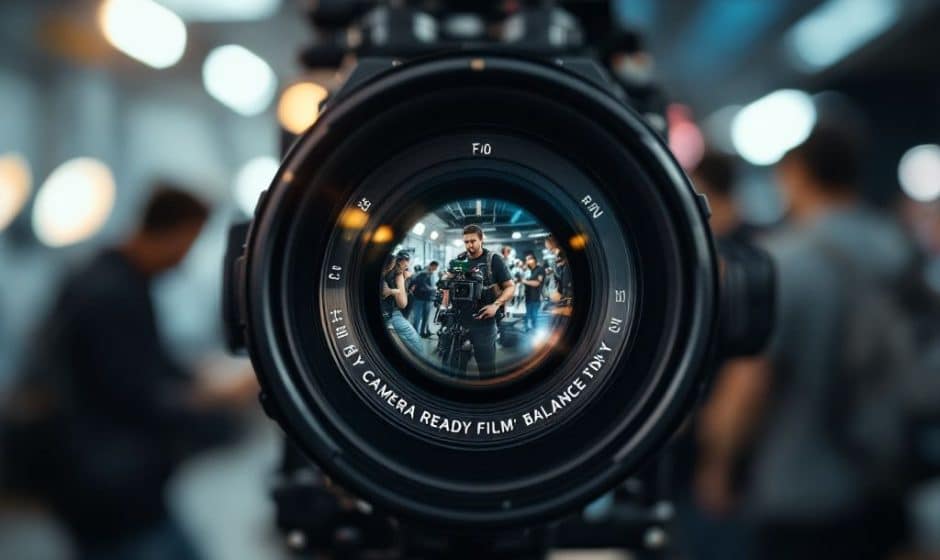It’s happened to us all: we’ve set the perfect scene, adjusted the lighting just right, and gathered the most talented actors for the big shoot—only to find that the balance of the camera is off, ruining that perfect shot. Frustrating, right? If you’ve been there, you’re not alone. Camera ready balance is a sly beast, but it’s not impossible to tame. Let’s dive into the hows and whys of achieving that cinematic perfection.
Understanding Camera Ready Balance
Before we even dive into what camera ready balance is, let’s talk about why it matters. You know that feeling when you’re watching a movie, and something just feels off? Like when the colors clash horribly or the motion isn’t quite as smooth as it could be? This is where camera ready balance comes in.
What Is Camera Ready Balance?
Camera ready balance involves ensuring that every aspect of your film shoot—from the camera settings to the actors’ positioning—is perfectly aligned to create a harmonious final product. In simpler terms: everything should look and feel just right.
The Importance of Balance
Have you ever looked at a misaligned picture on a wall and felt the urge to straighten it? That’s how drastic an impact balance can have on visual presentation. In film, this balance affects mood, clarity, and immersive experience.
Elements of Camera Ready Balance
Before we dive into actionable steps, let’s break down the components of this concept:
- Color and Lighting: Consistency in color grading and lighting is crucial. It ensures that one scene flows smoothly into another.
- Composition: Aligning your subjects and elements to meet both creative and practical objectives.
- Stabilization: A balanced image is one without unwelcome jitters and shakes.
- Sound Integration: While not always directly tied, imbalance in audio and visuals can disrupt the viewer’s experience.
Okay, so that’s what we’re dealing with. Now, how do we fix it?

Steps to Achieve Camera Ready Balance
Step 1: Master Your Camera Settings
You know that sad feeling when you undercook a cake because the oven temp was off? Camera settings work the same way. Ensuring your camera is set correctly is step one.
- White Balance: Adjust your camera’s white balance to match the lighting condition in your scene. Daylight, tungsten, or cloudy settings will help keep colors true.
- ISO Levels: Set your ISO to optimize light intake without causing graininess. High ISO can add unwanted “noise” to your footage, while too low leaves you in the dark—literally.
- Shutter Speed and Aperture: These should complement each other and match the frame rate you want to achieve.
Step 2: Consistent Screen Health
Yes, we’re stealing a term from tech health here. Screen health in this context ensures your recording equipment (screens, monitors, etc.) is well-calibrated to provide the most accurate output, helping you spot balance issues early.
Step 3: Establish Lighting Consistency

Imagine going from a muggy summer day into a cold winter’s night without warning. That’s how jarring inconsistent lighting can be.
- Use Softboxes and Diffusers: These tools will help soften shadows and create a more even light distribution.
- Maintain Color Temperature: Keep your lighting consistent with your camera’s white balancing settings. Use gels or dedicated lights to correct color temperature if necessary.
Step 4: Hone in on Composition
Think of your film frame as an artist’s canvas. Balance is achieved when everything in it serves a purpose.
- Rule of Thirds: Divide the frame into nine equal parts and place your focal elements along these lines or their intersections. This creates a natural, balanced look.
- Keep Horizons Straight: Unless creative blurring are objectives, a tilted horizon can feel unsettling.
Step 5: Stabilization
Nobody loves a shaky camera unless it’s an actual earthquake scene, right? So let’s smooth those bumps out…
- Tripods and Stabilizers: Ensure investments in solid stabilizing units which will decrease risk of imbalance during shooting.
- Post-Production Stabilization Tools: In cases where jitter creeping is unavoidable, post-editing tools can subtly fix minor issues.
Step 6: Sound Balance

Balanced audio is often the underdog that amplifies visual glory or takes it down.
- Dual Layer Sound Bites: Imagine having both close-range and ambient sound microphones to capture a balanced audio texture.
- Proper Sound Mixing: Think of volume levels and punctuality, preventing dialogue from being swallowed by sound effects.
Key Takeaways
When enhancing your filmmaking toolkit, remember these essentials:
- Always match your white balance to the lighting environment.
- Double-check composition with practical tools like grids.
- Never underestimate the power of steady camera rigs.
Common Mistakes to Avoid
Even the pros mess it up sometimes. Steering clear of these pitfalls will save you tons of frustration later.
- Ignoring the Setting Environment: This cuts off connection between on-camera setup and desired results.
- Over-correction: Don’t go gun-ho on one issue; maintaining multiple aspects in check aids better quality output.
- Hesitant Color Grading: Trust yourself! Cohesive tonal adjustments craft more emotive viewing.
In conclusion, getting that picture-perfect balance isn’t just for the gearheads and tech geeks. It’s within reach, no matter your level of expertise. It’s all about knowing what to look for—and, importantly, trusting what you see. So the next time you line up the lens, focus your artists, or tweak those settings, you’ll know exactly how to get the balance right.
After all, in filmmaking, it’s those perfectly balanced moments that capture our hearts and imagination. So grab your camera, embrace the learning curve, and watch as your film footage rises to a whole new level of professional grace. Happy shooting!
Frequently Asked Questions
What causes a hormonal imbalance?
A hormonal imbalance can be caused by natural changes or stages in your life, such as puberty, pregnancy, perimenopause, and menopause. Additionally, hormone levels can be affected by medical conditions, surgeries like a partial or full hysterectomy, tumors, adenomas, and autoimmune diseases[1][3][5).
What are the signs and symptoms of a hormonal imbalance?
The signs and symptoms of a hormonal imbalance can vary widely but may include irritability and fatigue, mood swings and depression, skin dryness and loss of elasticity, water retention and weight gain, osteoporosis and joint pain, less interest in sex, insomnia and other sleep disorders, and memory issues and difficulty concentrating[1][3][5).
How does hormone replacement therapy help with hormonal imbalances?
Hormone replacement therapy helps by restoring stable hormone levels, which can improve sleep, increase energy, enhance memory, improve concentration and focus, elevate mood, reduce mood swings, improve skin hydration, increase interest in sex, regulate weight and reduce water retention, and protect joints and bones[1][3][5).
What are the different types of hormone therapy available?
There are several types of hormone therapy, including systemic hormone therapy (available in pill form, patches, rings, gel, cream, or spray), low-dose vaginal products (for vaginal and urinary symptoms), and bio-identical hormone replacement therapy (which mimics the structure of human hormones and may have fewer side effects)[1][5).
References




